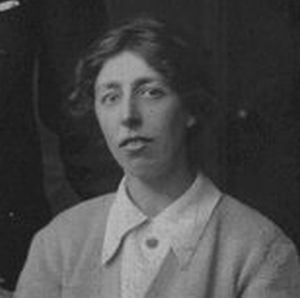Fields Biochemical genetics Name Muriel Onslow | Died May 19, 1932, Cambridge | |
 | ||
Born 31 March 1880
Birmingham, England ( 1880-03-31 ) Alma mater University of Cambridge Books The Anthocyanin Pigments of Plants, Practical Plant Biochemistry | ||
Education University of Cambridge | ||
Muriel Wheldale Onslow (31 March 1880 – 19 May 1932) was a British biochemist, born in Birmingham, England.She was married to biochemist Victor Alexander Herbert Huia Onslow, second son of the 4th Earl of Onslow.She studied the inheritance of flower color in the common snapdragon further contributing in the concern of biochemistry pigment molecules in plants such as anthocyanins. She attended the King Edward VI High School in Birmingham and then matriculated at Newnham College, Cambridge in 1900.At Cambridge she majored in botany. She received no degree from Cambridge, despite taking First Class Honors in both parts of the Natural Sciences Tripos, because Cambridge did not award degrees to women until 1948. She later went into the genetic lab at Cambridge to focus on the inheritance of petal color in Antirrhinum (snapdragons)She later wrote her own book in 1916.She was one of the first women appointed as a lecturer at Cambridge.A play was written about her and four other biochemists.
Contents

Early life and career
She was the only child of John Wheldale who was a barrister.She attended King Edward VI High School in Birmingham, which was well known among st girls schools for its scientific teachings. In 1900 she entered Newham College, Cambridge and took a class in Natural Sciences Tripos.
In 1903 she joined William Bateson's genetics lab at Cambridge where she began her study focusing on the interaction of factors and of the inheritance of petal color in Antirrhinum (snapdragons). William Bateson was the English biologist who was the first person to use the term genetics to describe the study of heredity, and the chief populariser of the ideas of Gregor Mendel following their rediscovery in 1900. Bateson and Onslow carried out a series of breeding experiments in various plant and animal species between 1903 and 1910.
By 1906 Wheldale had enough data to formulate a rudimentary factorial analysis on snapdragon inheritance. She became and assistant lecturer in her own college from 1906-08.In 1907, Wheldale identified and, with the help of Bateson, termed the phenomenon of dominant-like relationship between different pairs of nonallelomorphic factors as epistasis. Wheldale's study of genetics on flower coloration ultimately gained her the most recognition, with the 1907 publication of a full factorial analysis of flower color inheritance in snapdragons and the four subsequent papers she published from 1909 to 1910. This work culminated in the 1916 publication of her first book, The Anthocyanin Pigments of Plants.
In 1914 Onslow joined the biochemistry lab of Frederick Gowland Hopkins, where she pursued the biochemical aspects of petal color, whose genetics she had elucidated at Bateson's lab. In combining genetics and biochemistry she became one of the first biochemical geneticists and paved the way for the later successes of such seminal investigators as Edward Tatum and George Beadle.
In 1919 Onslow married biochemist Victor Alexander Herbert Huia Onslow, second son of the 4th Earl of Onslow. He had recently entered the field of chemical genetics, and their work was closely associated.Victor Onslow was paraplegic and died in 1922. In her memoir for her husband she wrote that he was a man of amazing courage and mental vitality enabling him to work gain a career in biochemicals through tough times.His work will always be an inspiration to those who witnessed it.
In 1926 she was one of the first women appointed as a lecturer at Cambridge with such a form of recognition. Among st her followers was Rose Scott-Moncrieff who went on to identify the first crystalline form of Primulin in about 1930. This was the first crystalline anthocyanin pigment ever identified. Onslow and Scott-Moncrieff have been credited with founding biochemical genetics, although Scott-Moncrieff is thought to have the stronger claim.
Muriel Onslow died on 19 May 1932.
In 2010 the Royal Institution of Great Britain staged a play, entitled "Blooming Snapdragons," about four early-20th-century women biochemists, one of whom was Muriel Onslow.
